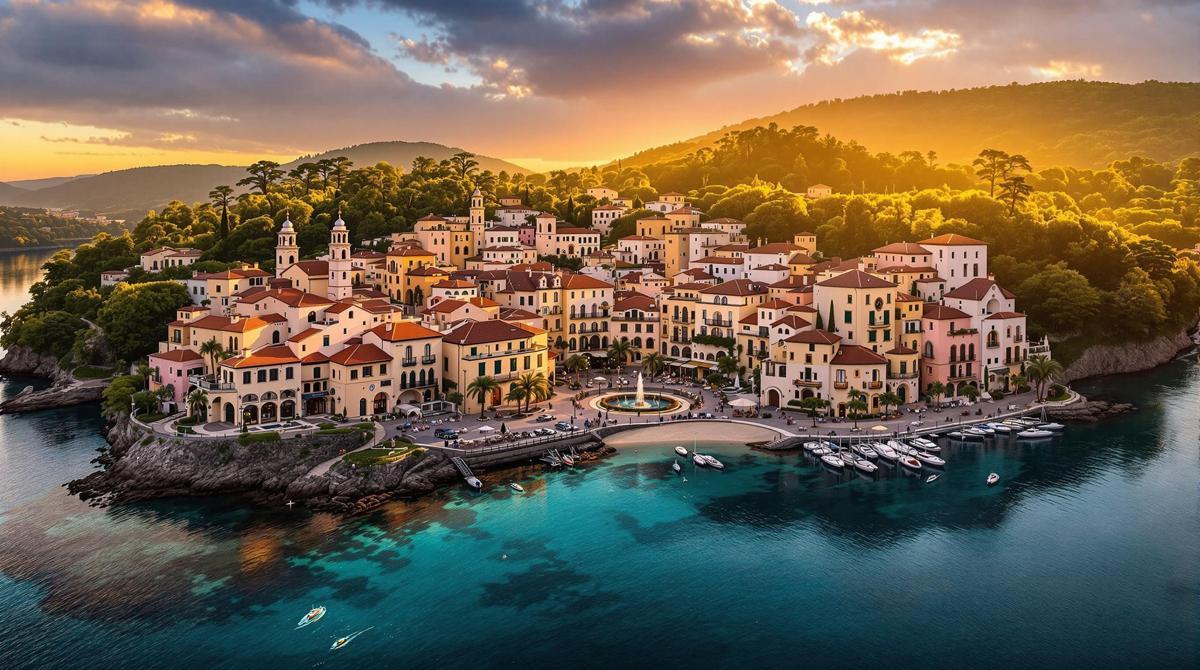In a forgotten corner of North Wales lies a place so surreal it feels like stepping into a dream – Portmeirion, a pastel-colored Italian village improbably planted on Welsh shores. Over 200,000 visitors flock annually to this architectural fantasy that captured imaginations worldwide as the filming location for cult 1960s TV series “The Prisoner.”
A visionary’s Mediterranean dream in Welsh countryside
Created between 1925 and 1976, Portmeirion represents the life’s work of eccentric architect Sir Clough Williams-Ellis. Rather than building a traditional Welsh village, he designed a theatrical tribute to the Mediterranean coast that proves beauty and development can coexist harmoniously.
“I wanted to create a place where the natural landscape could be enhanced rather than destroyed by architecture,” Williams-Ellis once said of his masterpiece, which remains one of the most photographed locations in Wales.
The curious legend of the Ghost Garden
Beyond the vibrant central piazza lies the 70-acre Gwyllt Wild Gardens, home to one of Portmeirion’s most intriguing secrets – the Ghost Garden. Local legend tells of plants that bloom mysteriously at night and whispers heard among the rare species collected from across the globe.
Where TV history was immortalized
Fans of vintage television recognize Portmeirion instantly as “The Village” from “The Prisoner,” where protagonist Number Six was held captive. The surreal setting perfectly matched the show’s psychological themes, creating an atmosphere both beautiful and slightly unnerving.
“Portmeirion captures something otherworldly – it feels like you’ve stepped through a portal into another reality,” notes Welsh historian Meredith Hughes. “No wonder it was chosen as the setting for a show about blurred reality.”
A culinary journey through Italy and Wales
The village’s cuisine reflects its cultural duality. At Caffi Glas, traditional Welsh cakes share menu space with authentic Italian gelato from Angel Ices. This blend of culinary traditions creates a unique gastronomic experience that complements the village’s architectural fusion.
The hidden Chinese Lake most visitors miss
While most tourists remain in the central village, those who venture deeper into the surrounding woodlands discover the tranquil Chinese Lake. This secluded gem offers spectacular reflections of the forest canopy and provides a peaceful contrast to the vibrant energy of the main plaza. Similar hidden wonders await in Thailand’s emerald waterfalls – another paradise worth exploring.
The coastal path with breathtaking estuary views
Follow the winding trail along Portmeirion’s coastline to experience the stunning Dwyryd Estuary vistas that inspired Williams-Ellis. At sunset, the waters transform into a mirror of gold and crimson, creating photographic opportunities rivaling those of Taiwan’s sacred lakes.
A sanctuary for remote workers
With its serene atmosphere and unique inspiration, Portmeirion has become a favorite retreat for digital nomads seeking creative stimulation. The village offers excellent connectivity alongside unparalleled surroundings, making it ideal for those looking to combine work and exploration, similar to destinations offering digital nomad visas.
Conservation success story
Portmeirion represents a pioneering example of sustainable tourism, preserving both cultural heritage and natural beauty. Its balanced approach to conservation reminds visitors of other preservation triumphs like African parks protecting endangered elephants.
Underground secrets beneath the color
Few visitors realize that beneath Portmeirion’s colorful façades lie fascinating underground spaces, though not quite as extensive as the wine caves beneath medieval castles elsewhere in Europe. These hidden chambers once served as storage areas and now add another layer to the village’s mystique.
“The true magic of Portmeirion lies in its contradictions – it’s proudly Welsh yet defiantly Mediterranean, thoroughly planned yet feels spontaneous, completely artificial yet somehow authentic,” says travel photographer Carys Jones.
Portmeirion stands as a testament to imagination and vision – a place where the impossible becomes reality. In this village of dreams, the boundary between fantasy and reality blurs, leaving visitors forever changed by its unique charm and beauty.
